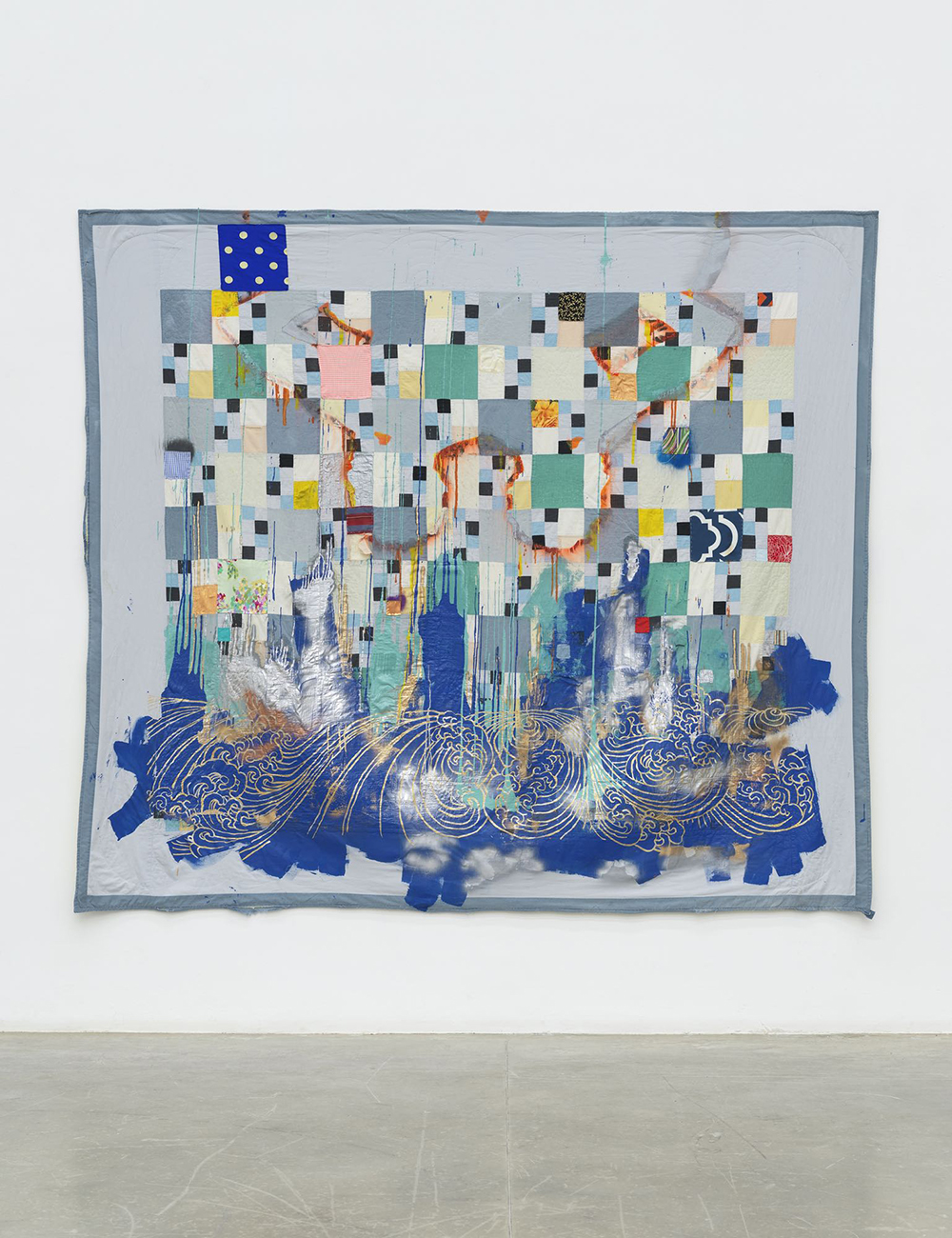When one enters the massive gallery at California African American Museum occupied by “Sanford Biggers: Codeswitch,” it’s easy to be seduced by the cacophony of bold color, textures and geometric patterns. Power symbols appear and disappear like a nickelodeon on fabric, communicating in code such blights on American history as lynching, blackface minstrelsy, and slave ships. In the hands of Sanford Biggers, quilts from the 19th century are desecrated, embellished and beautified, building up a material African American history within a conceptual framework.
In Sakura (2014), Biggers returns to his familiar meditation in the form of a tree (one of Biggers’ most well-known works, Blossom (2007) resides in permanent installation at the Brooklyn Museum). While the work’s title and bright blue tree with pink cherry blossoms undoubtedly alludes to the artist’s years spent in Japan—appreciating the kimono textiles, banzai and Buddhism—it also references America’s dark history of lynching Black citizens.
Biggers’ iconic Cheshire smile appears again and again. At times it is obscured in the depths of texture and pattern, or turned on its side as in Chesire (Guapa) (2014), at first appearing to be an image of a woman’s genitals. While the Cheshire grin might be most often associated with the mischievous cat in Alice’s Adventures in Wonderland, it also refers to the more sinister history of blackface minstrelsy.

Installation shot: Sanford Biggers: Codeswitch. California African American Museum. L: whence/wince (2020), R: Cheshire (Guapa) (2014). Image by Bianca Collins.
Patches with lotus flowers are found on many of these quilt works. Look closely, and you may realize that each petal’s form is made from the image of an aerial view of a slave ship. These images have been reappropriated from slave-trading manuals directing how to best pack human cargo for a cross-Atlantic trip. Early slave trade abolitionists got ahold of these manuals and mass distributed posters to show the atrocities of the practice, creating some of the first graphic propaganda programs against slavery—a practice Biggers continues with these works.
In whence/wince (2020), one of the largest pieces in the gallery and one of two new works in the exhibition, two red-white-and-blue quilts are sewn together. The phallic forms of four Greek columns are cut from the cloth and lie flaccid and defeated on the ground. A negative void of sizable volume, subtracted from quilts made from the colors of the United States flag, might represent the decline of democracy—a visual tale that history is doomed to repeat itself and fall to ruin like great Greek temples dedicated to undefeatable gods like Zeus.
The contested history that quilts acted as signposts for enslaved peoples on the Underground Railroad is perhaps not widely known. Such quilts are said to have contained secret messages that could only be deciphered by a community rooted in conversation, to direct their people to freedom. Through these new works in “Codeswitch,” Biggers becomes a late collaborator with the original creators of the quilts, continuing a long history rooted in orality and performance, shaped and defined by connections not always visible to everyone.


